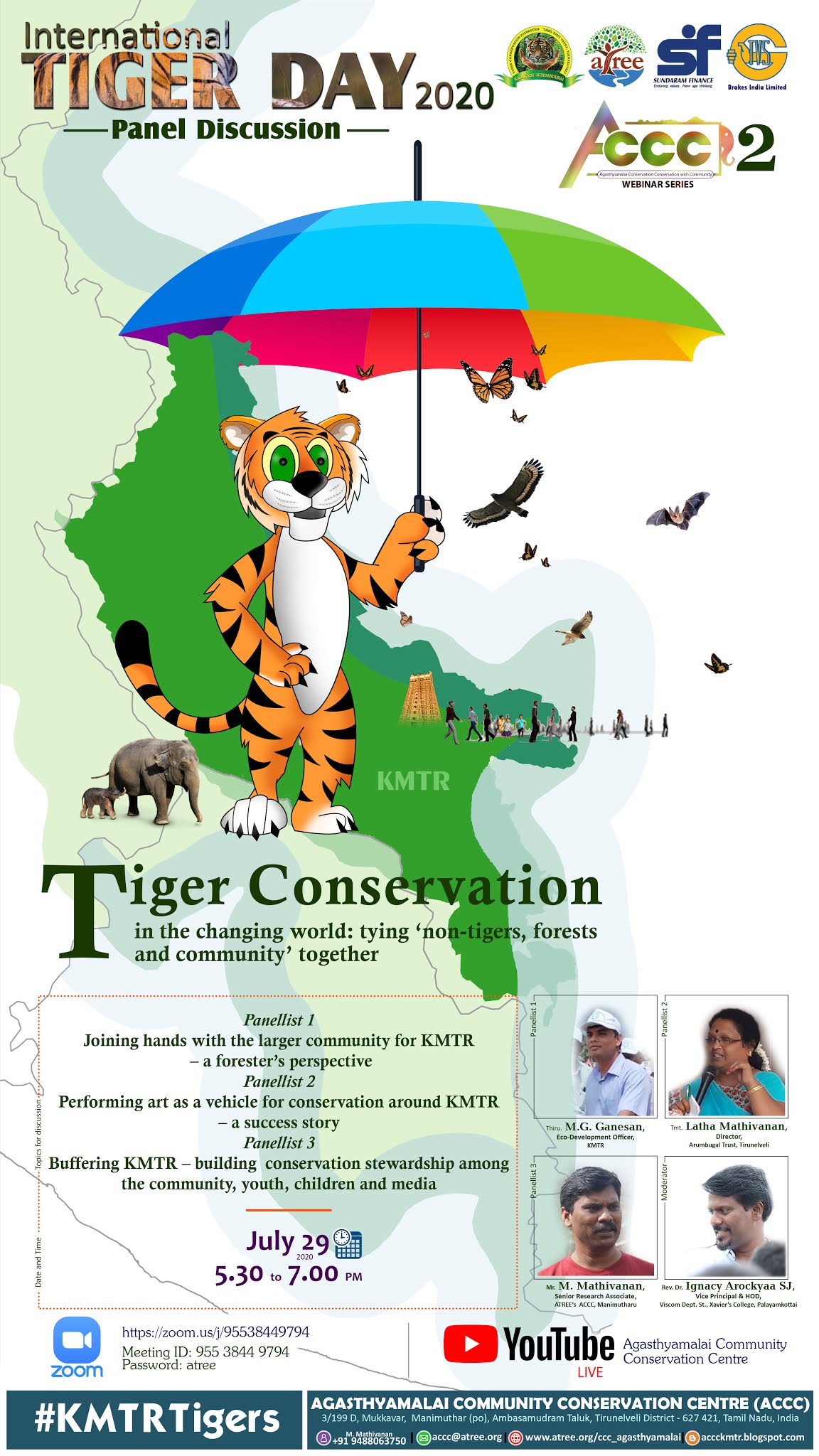Tiger Conservation in the changing world: tying `non-tigers,
forests and community' together
Kalakad Mundanthurai Tiger Reserve (KMTR) is the southernmost Tiger
habitat in the Western
Ghats. This is the 17th Tiger Reserve
in India and 1st in Tamil Nadu. KMTR is known for
several endemic plants and endangered animal species. KMTR is part of UNESCO‘s
Biosphere Reserves and over 14 rivers originate from KMTR so is popularly known as
rivers sanctuary. The perennial river Tamiraparani which originates from KMTR
is the lifeline
for Tirunelveli, Tenkasi, Thoothukudi and part of Virudhunagar and Kanyakumari districts.
There are not many human settlements within KMTR compared to any other Tiger Reserves
in the Western Ghats. However, there are over 250 villages located in the
buffer of KMTR.
Prior to 1992, the villagers collected fuelwood and fodder from the reserve and
they also
sent their cattle to the reserve for grazing. To overcome these challenges, the
Tamil Nadu Forest
Department with the aid from World Bank initiated the Eco-development Project
in the
buffer villages of KMTR. The project targeted alternate livelihoods for forest
dependent communities.
This was a successful project and is now being scaled up to the entire Western Ghats
buffer in Tamil Nadu. In recent times, problems like human-animal conflicts,
increase in
religious tourism, land-use changes in buffer have emerged, which needs dire
attention. Tiger
has been an effective umbrella species under which the plants and other animals
have been
protected so far. However, today larger society have more responsibilities to
conserve the
habitat of the tiger as it has strong links with their own wellbeing - for e.g
an important watershed
and source for drinking water. In this changing world, the Tiger conservation cannot
be viewed in isolation and we have to look beyond single-species protection. It
is also about
protecting scores of other species found within the reserve; even extending to
the larger
landscapes and mitigating the problems of communities living in nexus with
them. In the
coming times, communities from all walks of life have an important role to play
in conservation.
Against
this backdrop - we are organizing a panel discussion on learnings from some of
the community
engagements in the landscape and also to explore the scope to scale up the efforts
to the larger landscape.
Panellists
1. Thiru.MG Ganesan, M. Sc (Agriculture), DCF, Tamil
Nadu Forest Department
Worked
as agricultural officer. Recruited as ACF in 2014 batch. Trained at CASFOS
DEHRADUN.
Since
2018 he is working as Eco Development Officer at Kalakad Mundanthurai Tiger
Reserve,
he
is managing 400 Village Forests Councils at Agasthyamalai Tamil Nadu landscape.
Topic: Joining
hands with the larger community for KMTR – a forester’s perspective:
2. Tmt. Latha Mathivanan, Director,
Arumbugal Trust, Tirunelveli
Member
of Tamil Nadu State Wildlife Board. For past 25 years she is working in the
field of
women
empowerment, eco-development in forest fringe villages through Arumbugal
Cultural
Team.
Topic:
Performing art as a vehicle for conservation around KMTR – a success story
3. Thiru M Mathivanan, Senior Research Associate, ATREE’s
Agasthyamalai Community
Conservation
Centre, Manimutharu
For
past one and half decades he is working in the field of biodiversity
conservation through
various
outreach programmes. He is working closely with local community, students,
media
and
government agencies.
Topic:
Buffering KMTR – building conservation stewardship among the community, youth,
children and media
Moderator
Dr. (Rev.) Ignacy Arockyaa SJ is a Vice Principal and Head of the
Department of Visual Communication at
St., Xavier’s College, Palayamkottai. He worked as a director of Loyola
Engineering College, Chennai. He
is an independent researcher in Environmental Communication.


Comments
Post a Comment